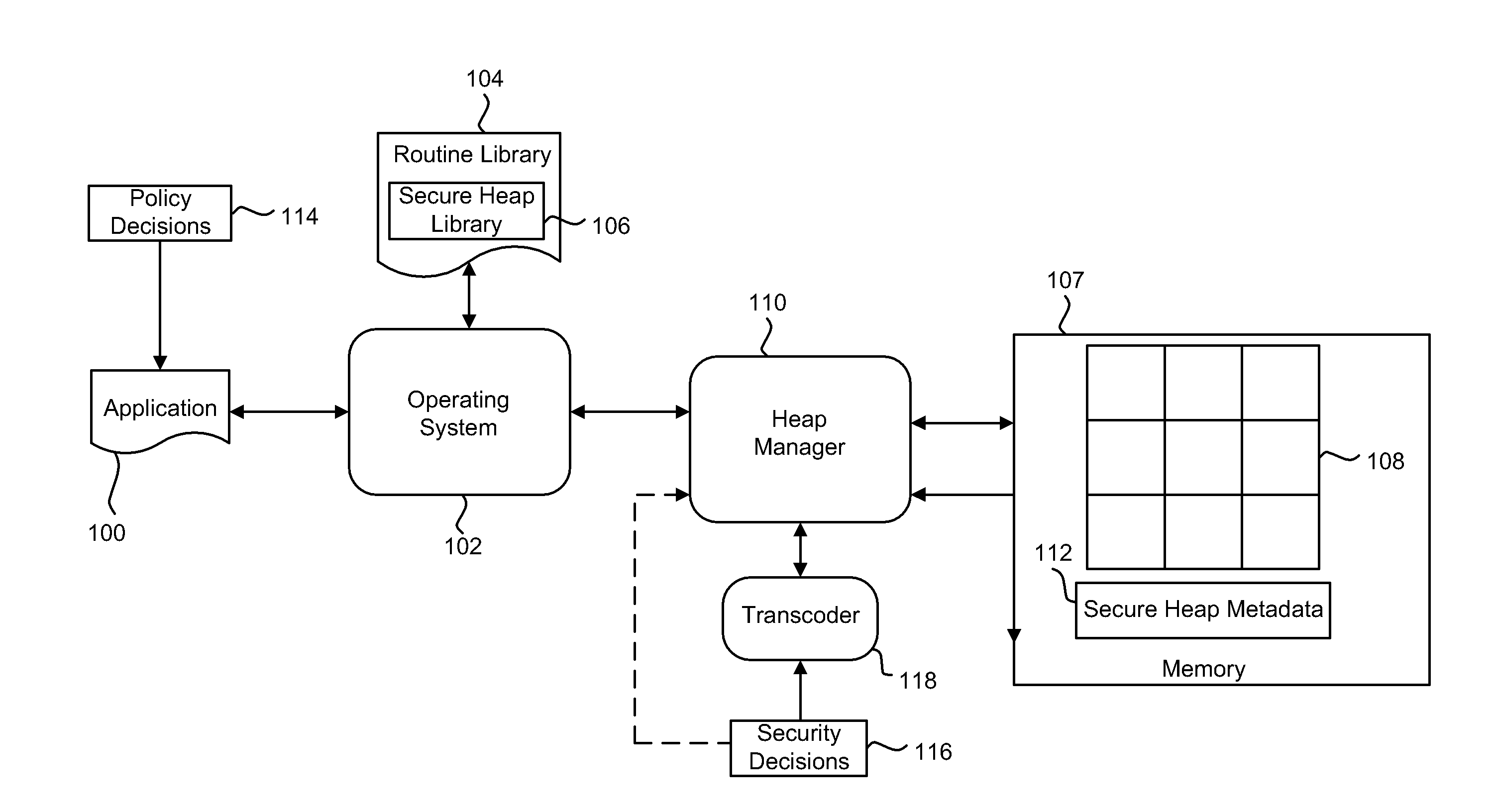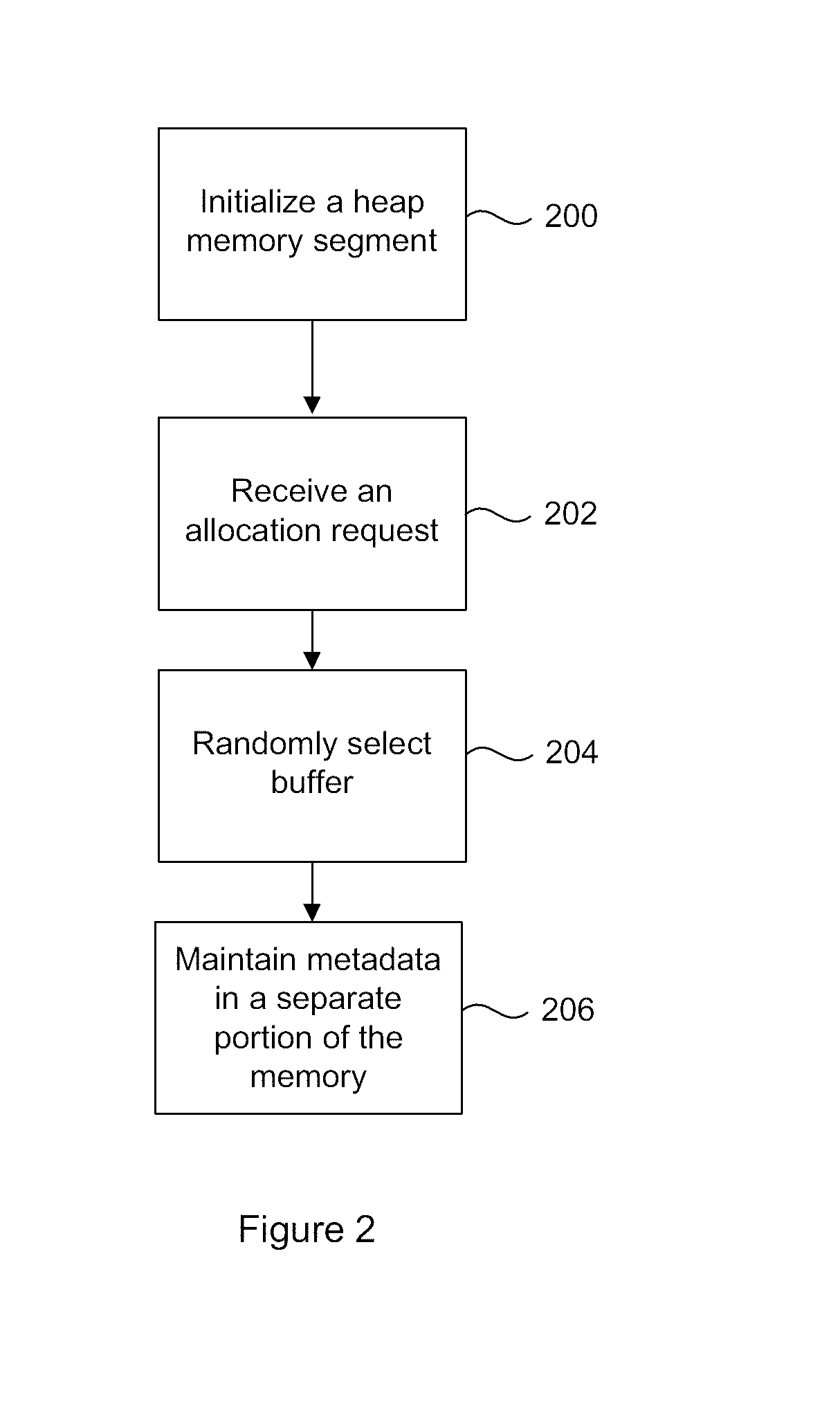Method of Securing Memory Against Malicious Attack
a technology of malicious attack and memory, applied in the field of securing memory against malicious attack, can solve the problems of inability of processor hardware and some operating systems to support a protection scheme for dynamically allocated memory, the integrity of dynamically allocated memory data may be compromised, and inputs may compromise the integrity of the data structure in the dynamically allocated memory
- Summary
- Abstract
- Description
- Claims
- Application Information
AI Technical Summary
Benefits of technology
Problems solved by technology
Method used
Image
Examples
Embodiment Construction
[0017]Generally, the present disclosure describes a method and system for secure dynamic memory management. Embodiments are described in relation to C / C++ implementations, but are not intended to be restricted to such implementations, and the method described herein can be used in relation to any dynamic memory management system using heap memory, or analogous dynamic memory allocation. According to certain embodiments, the secure heap of the present disclosure can securely implement the functions of those portions of the C / C++ stdlib library related to dynamic memory management, specifically malloc( ), free( ) and their variants.
[0018]Broadly speaking, the secure heap implementation supports two types of memory allocation pointers: “smooth” and “handle” pointers. The “smooth” pointers are standard memory addresses pointing to a piece of storage with the requested size. “Smooth” pointers may be directly dereferenced by the calling application. The “handle” pointers are not standard ...
PUM
 Login to View More
Login to View More Abstract
Description
Claims
Application Information
 Login to View More
Login to View More - R&D
- Intellectual Property
- Life Sciences
- Materials
- Tech Scout
- Unparalleled Data Quality
- Higher Quality Content
- 60% Fewer Hallucinations
Browse by: Latest US Patents, China's latest patents, Technical Efficacy Thesaurus, Application Domain, Technology Topic, Popular Technical Reports.
© 2025 PatSnap. All rights reserved.Legal|Privacy policy|Modern Slavery Act Transparency Statement|Sitemap|About US| Contact US: help@patsnap.com



